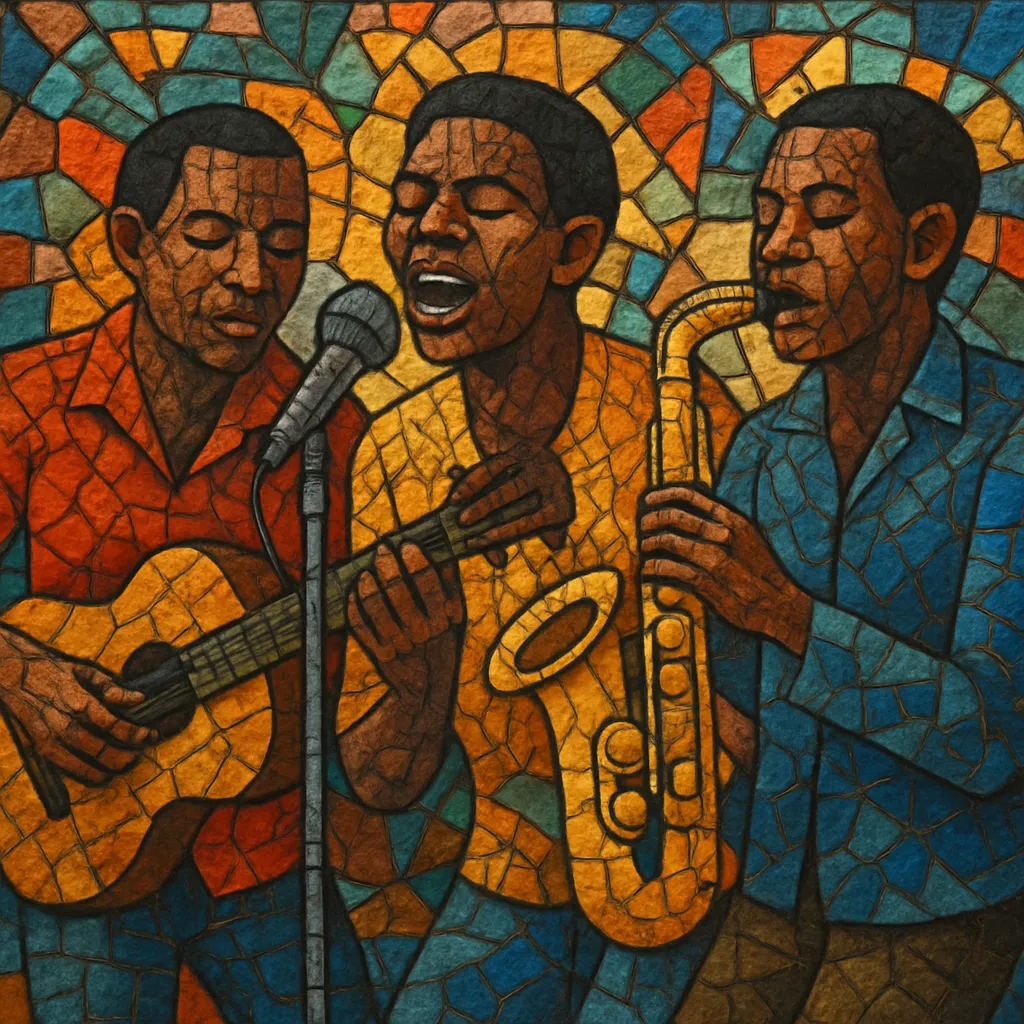Soukous is a high-energy dance music that evolved in the Congolese region (Kinshasa–Brazzaville) from Congolese rumba and Afro‑Cuban styles. It is defined by interlocking electric guitars, buoyant bass lines, bright horn stabs, and long, fast "sebene" instrumental sections designed for dancing.
Vocals are often in Lingala with French interjections, and themes frequently revolve around romance, urban life, and social commentary. The music emphasizes forward motion and joyful release, pairing Afro‑Cuban rhythmic logic (clave-informed phrasing) with signature Congolese guitar picking that creates a shimmering, cascading texture.
Soukous grew out of Congolese rumba, which itself adapted Afro‑Cuban records (especially son and cha-cha-chá) circulating in Leopoldville/Kinshasa and Brazzaville in the 1940s–50s. Pioneers such as Joseph "Grand Kallé" Kabasele (African Jazz), Franco Luambo Makiadi (OK Jazz/TPOK Jazz), Tabu Ley Rochereau, and Dr. Nico translated Cuban song forms into local aesthetics, centering guitars and Lingala lyrics. As tempos quickened and instrumental breaks lengthened, the emerging fast-dance variant came to be called soukous (from French "secousse," meaning "to shake").
During the 1970s, bands refined the style’s hallmark: the "sebene," an extended, propulsive section featuring interlocking guitar parts (lead, mi-solo, and rhythm) over a churning groove. Franco’s TPOK Jazz and Tabu Ley’s African Fiesta, among others, codified the big-band horn sound, call-and-response vocals, and lyrical sophistication. New groups like Zaiko Langa Langa modernized the rhythm section, streamlined horn use, and pushed faster, youth-driven arrangements.
Paris became a key hub as Congolese musicians migrated, electrifying and polishing production. Artists such as Kanda Bongo Man, Aurlus Mabélé (Loketo), and Mbilia Bel helped popularize soukous across Europe and the African diaspora. Dance crazes like kwassa kwassa accompanied the music’s rise, with recording and touring networks spreading soukous throughout Africa and beyond.
The 1990s saw the emergence of ndombolo (a faster, harder-edged offshoot) spearheaded by stars like Koffi Olomidé and Papa Wemba. Soukous’ guitar vocabulary and rhythmic drive profoundly influenced regional styles from East to Southern Africa (e.g., sungura, benga) while continuing to thrive in club and festival contexts. Today, classic and contemporary soukous coexist, with modern production highlighting bright guitars, punchy drums, and extended dance sections.


